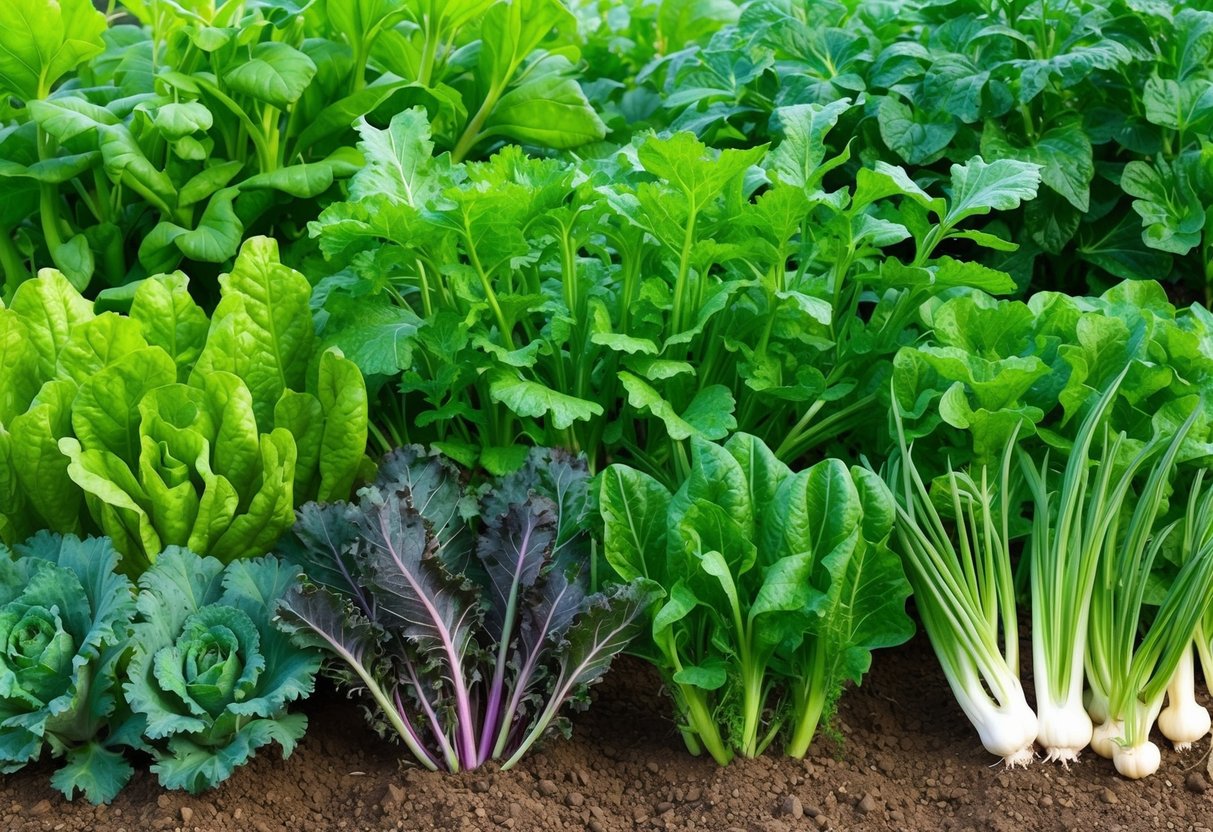
Nasturtium and Edible Protection
Nasturtiums serve a dual function in the garden: pest diversion and edible appeal. Their bright flowers attract aphids away from crops like beans, cucumbers, and squashes, acting as a trap crop and protecting more valuable vegetables from infestations.
Both the leaves and flowers of nasturtium are edible and can be added to salads for a peppery flavor. Nasturtium also attracts hoverflies and predatory insects that feed on pests, making this plant a useful addition for organic pest control.
Their sprawling habit enables gardeners to create a living mulch that shades the soil, reducing weed growth and moisture loss. For a detailed look at nasturtiums and their effect on vegetable protection, review the companion planting chart at The Spruce.
Chives, Mint, and Aromatic Enhancers
Chives and mint are aromatic herbs that bring strong scents, which mask the smell of nearby vegetable plants. Chives repel aphids and deter Japanese beetles when grown near carrots, tomatoes, and roses.
They also offer edible leaves and flowers with a mild onion flavor that chefs and gardeners appreciate. Mint acts as a deterrent for ants, aphids, and cabbage moths but requires careful management, as it spreads quickly.
Using mint in containers or restricting its rhizomes prevents it from taking over garden beds while still offering protection. Chives and mint both attract pollinators like bees with their flowers, which boosts vegetable yields.
Their role as aromatic enhancers makes them a smart, multifunctional choice in garden planning.
Calendula, Borage, and Pollinator Attractors
Calendula, also known as pot marigold, draws in pollinators such as bees and butterflies, increasing pollination efficiency for vegetables like tomatoes, beans, and cucumbers. Calendula flowers also attract beneficial insects, including hoverflies and lacewings, that prey on garden pests.
The petals are edible, offering color and flavor to salads. Borage is another valuable companion plant, notable for its blue, star-shaped flowers that bring bees to the garden in large numbers.
Borage is particularly effective near squash, tomatoes, and strawberries due to its nectar-rich blossoms. It is said to improve plant health and resilience and its leaves serve as a mild culinary herb.
Flower-rich borders with these species create a habitat for beneficial garden allies and support sustainable, high-yield gardening. For more on attracting pollinators with flowers, see this companion planting flower guide from The Spruce.
Vegetables That Benefit Most From Companion Planting
Many vegetables can thrive when their preferred companions are nearby, as certain plant pairings help deter pests, attract pollinators, and improve nutrient availability. Some vegetables respond especially well to companion plants, delivering higher yields and stronger plants when grouped strategically.
Tomatoes, Peppers, and Eggplants
Tomatoes, peppers, and eggplants are nightshades that benefit from companions able to enhance growth and repel common pests. Basil planted near tomatoes can improve both flavor and growth, while marigolds help deter nematodes and tomato hornworm larvae.
Beans add nitrogen to the soil, supporting the nutrient needs of these vegetables. Borage attracts bees and beneficial insects, boosting pollination rates.
Peppers and eggplants can be paired with nasturtiums, which repel aphids and beetles. Avoid planting nightshades near brassicas such as broccoli or cabbage, as this can attract similar pests and lead to competition for nutrients.
Aromatic herbs such as oregano and chives further support pepper plant health by deterring aphids and spider mites. Proper spacing and diverse plant groupings lead to larger, healthier harvests.
For more details, see companion planting strategies for tomatoes and peppers.
Cucumbers and Squash
Cucumbers and squash benefit greatly from companion planting that attracts pollinators and discourages pests. Nasturtiums, marigolds, and zinnias are beneficial flowers that repel cucumber beetles and enhance pollinator activity.
Beans and peas work well with cucumbers because they fix nitrogen in the soil, which is valuable for heavy-feeding squash and cucumber plants. Corn can provide a living trellis for climbing cucumbers and also helps shade the roots, maintaining soil moisture.
Avoid placing potatoes nearby as they may compete for nutrients and increase disease risk. Squash grows especially well with beans and corn in a traditional “Three Sisters” system, where each plant supports the others for maximum yield.
Read more details about cucumber and squash companion plants.
Root Crops: Radishes, Carrots, and Onions
Radishes, carrots, and onions are root crops that excel when grown with allies such as lettuce, peas, and chives. Lettuce provides ground cover, keeping soil cool and reducing weeds around carrots and radishes.
Onions release compounds that deter carrot flies and aphids, making them an ideal neighbor for carrots. Radishes can be intercropped with many vegetables as they grow quickly and help break up compacted soil.
Beans and peas are generally avoided near onions, as onion family plants can stunt legume growth. Beets pair well with onions, while peppers offer some pest protection.
Planting parsley or nasturtiums can help fringed-root vegetables avoid pest trouble. Refer to this companion planting chart for more specific root crop combinations.
Common Pest Problems and Natural Solutions
Many vegetable gardens face persistent issues from pests like aphids, squash bugs, and cabbage moths. Effective control often relies on a mix of beneficial insects, specific companion plants, and cultural practices that disrupt pest lifecycles without chemicals.
Aphid Management with Ladybugs
Aphids are notorious for damaging young shoots, spreading disease, and stunting plant growth. Their populations can explode quickly, especially on lettuce, kale, and beans.
Ladybugs serve as a crucial natural predator, consuming hundreds of aphids in their lifetime. Gardeners can encourage ladybugs by planting flowers like dill, fennel, and yarrow, which supply nectar and pollen.
Introducing purchased ladybugs to infested areas during early morning or dusk boosts success rates, as ladybugs are less likely to fly away under cooler conditions. Adding plants such as nasturtium and marigold near vegetables creates a physical and olfactory barrier.
These companion plants also confuse aphids and attract more beneficial insects, supporting integrated pest control strategies.